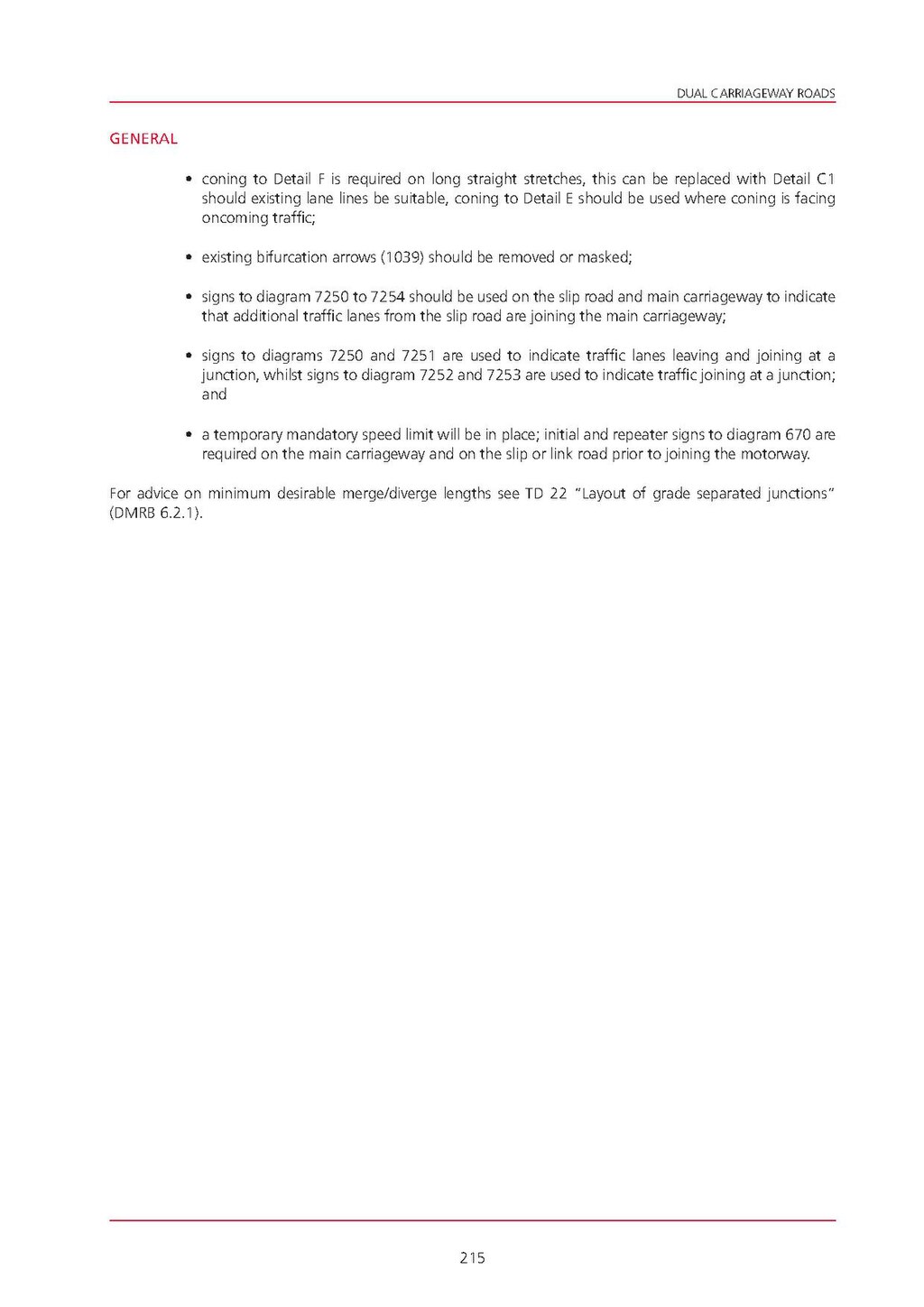DUAL CARRIAGEWAY ROADS
GENERAL
- coning to Detail F is required on long straight stretches, this can be replaced with Detail C1 should existing lane lines be suitable, coning to Detail E should be used where coning is facing oncoming traffic;
- existing bifurcation arrows (1039) should be removed or masked;
- signs to diagram 7250 to 7254 should be used on the slip road and main carriageway to indicate that additional traffic lanes from the slip road are joining the main carriageway; signs to diagrams 7250 and 7251 are used to indicate traffic lanes leaving and joining at a junction, whilst signs to diagram 7252 and 7253 are used to indicate traffic joining at a junction; and
- temporary mandatory speed limit will be in place; initial and repeater signs to diagram 670 are required on the main carriageway and on the slip or link road prior to joining the motorway.
For advice on minimum desirable merge/diverge lengths see TD 22 "Layout of grade separated junctions" (DMRB 6.2.1).
215
